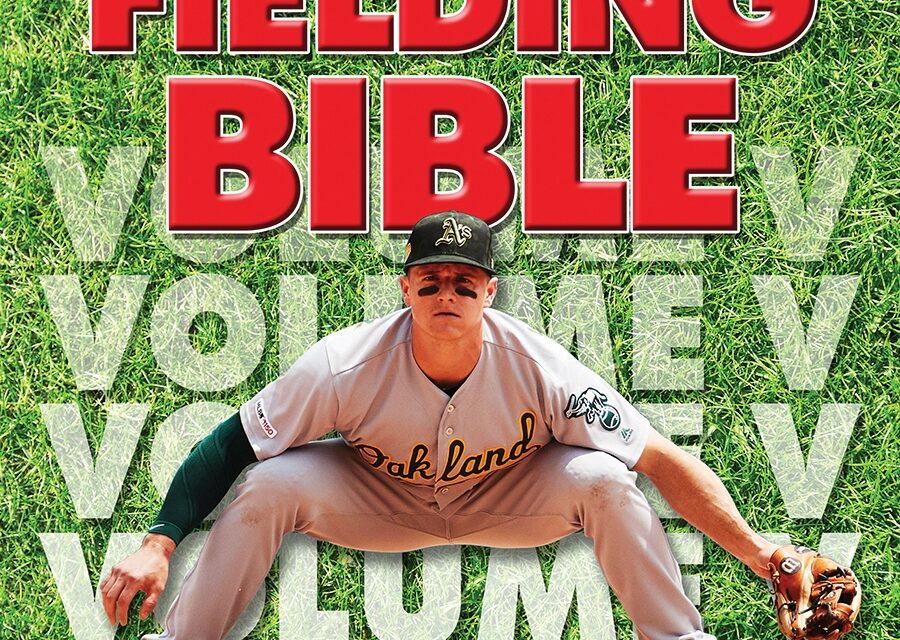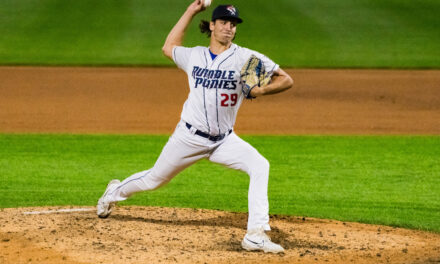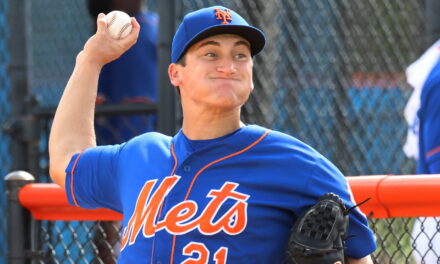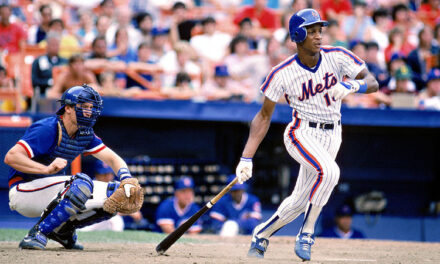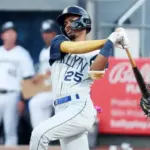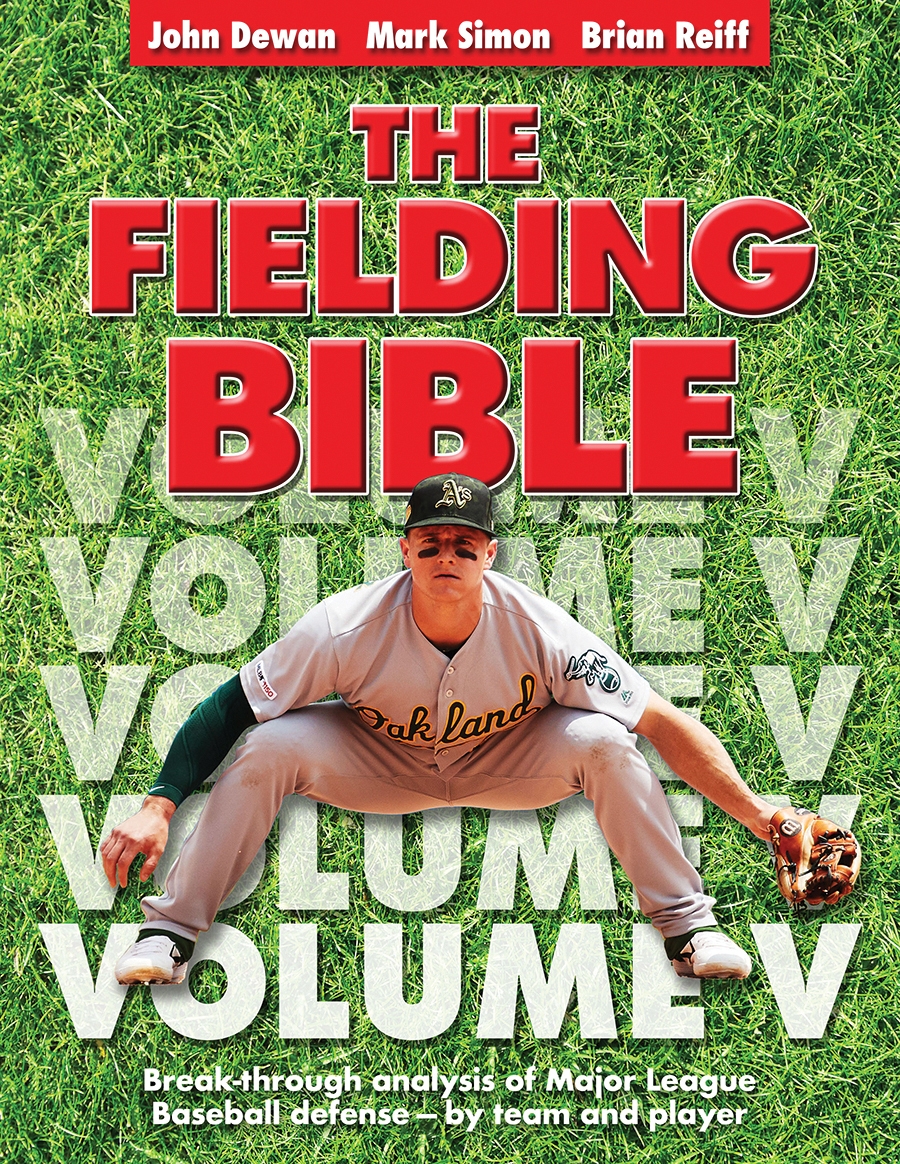
Sports Info Solutions has been an industry leader of in-depth data and analysis for almost two decades, with their flagship defensive stat, Defensive Runs Saved (DRS), being one of their most well-known contributions.
DRS attempts to measure how many runs a player saved on defense, and has been one of most utilized statistics when looking to quantify a player’s value defensively.
Sports Info Solutions, originally founded as Baseball Info Solutions back in 2002, is located in Coplay, Pennsylvania, and supplies proprietary data to more than two-thirds of major league teams.
This year, the company released its newest version of their comprehensive defensive stats book called The Fielding Bible, Volume V. This is their first edition since 2015 and includes important updates to the DRS stat.
The changes include breaking DRS into an acronym called PARTs (Positioning, Air balls, Range and Throwing), and being able to evaluate performance for individual players on shift plays.
The update essentially takes positioning out of the individual calculation of DRS for infielders, since positioning is more on the team rather than the player. Thus, the Positioning element of PART is now part of team DRS totals only. Removing positioning from a player’s individual DRS allows for better isolation of their skillset and removes what they cannot control.
Mark Simon, part of the research and development team at Sports Info Solutions since 2018 and co-author of the latest Fielding Bible, is well-versed in the data his company puts out. Simon’s role with the company includes educating the public on Sports Info Solutions’ data and analysis and dealing with the various broadcast crews to disseminate the information.
In The Fielding Bible, Volume V, each team has a chapter about their defensive metrics from the 2019 season. Simon wrote the New York Mets’ chapter and broke down the club’s DRS numbers, league rankings, and some details on individual performers like Pete Alonso, Jeff McNeil and Amed Rosario.
The Mets were one of the worst defensive teams in 2019, ranking 28th in DRS at -86, which was the worst among all National League clubs. The Mets are no strangers to fielding a poor defensive team, as they’ve placed no better than 27th since 2017.
With the Mets essentially returning the same club in 2020 (whenever the season hopefully begins!), Simon opines that the team needs to hope for continued development on the defensive end from several of their young players.
I had the privilege of speaking with Simon during Spring Training where we discussed the latest volume of The Fielding Bible, the updates to DRS and some Mets defense.
MMO: Can you talk a bit about the history of Sports Info Solutions and your role in the company?
Simon: Sports Info Solutions has charted games since 2002. It was a company that was founded by John Dewan and Bill James was also involved. Dewan used to own Stats Inc. and sold it to Fox.
He decided to form another company; it was him, Bill and the president of the company, Steve Moyer. Their goal was to get a little more specific in scorekeeping, charting games and tracking things that hadn’t necessarily been tracked before like batted ball location, pitch types and all the different things that I think now we kind of take for granted.
The company is headquartered in Coplay, Pennsylvania, about an hour and change from Philly and two hours from New York. The business has done very well and provides data to teams with more than two-thirds of the major league teams as clients. We’ve expanded into football and have a good NFL client base as well.
Our cornerstone has been defensive statistics evaluations, and John, Bill, and company were the ones who kind of invented defensive runs saved (DRS) as the measure to put defensive value to a player. The company has also tracked defensive shifts at a level that I think others weren’t able to do, and has a tool that allows teams to look at a fairly sophisticated spray chart – this is when shifts were just kind of starting – to try and figure out where to position players.
I was at ESPN for a little more than 15 years working on Baseball Tonight for nine and then worked on the ESPN Stats Twitter account. I had reached a point where the baseball options for me were kind of limited, and I decided that something else might be worth pursuing.
Sports Info Solutions had a relationship with ESPN for baseball and they now have a relationship with ESPN for college football; the baseball relationship doesn’t exist anymore. They asked if I’d be interested in coming over to work on baseball more fully.
We were able to make that work, and so I moved there and started working there since February 2018. My expertise is more on the editorial side and the presentation side and things like social media, presenting yourself to the public and dealing with the broadcast crews. We deal with SNY a little bit, we deal with the San Francisco Giants a pretty good amount, we deal with Kirk Gibson, broadcaster for the Tigers, a pretty good amount. I handle a lot of that.
I write for The Athletic and we have a blog. I do career development for the seasonal employees that we have and talk to them about the time I spent at ESPN and how to develop good work habits and build their resumes and things of that sort.
MMO: How does Sports Info Solutions go about capturing all of this defensive data?
Simon: I believe every baseball game is watched three times for all sorts of things. Whether it’s live tracking stuff – because we power certain website’s live feeds – and then we have people that are watching for specific batted ball location-related things, and that’s a cumbersome process.
We have a whole bunch of different defensive systems, and we also do something we call Good Fielding Plays and Defensive Misplays where if a guy robs a home run we track it. If a guy scoops a throw we track it. If someone cuts a ball off in the hole between short and third to prevent it from going through the infield and the runner can only go to third and not score, we track it. They’re tracking pretty good detail.
For football, I think it’s something like twenty-four man-hours are spent on an NFL game or college game in terms of the level of detail.
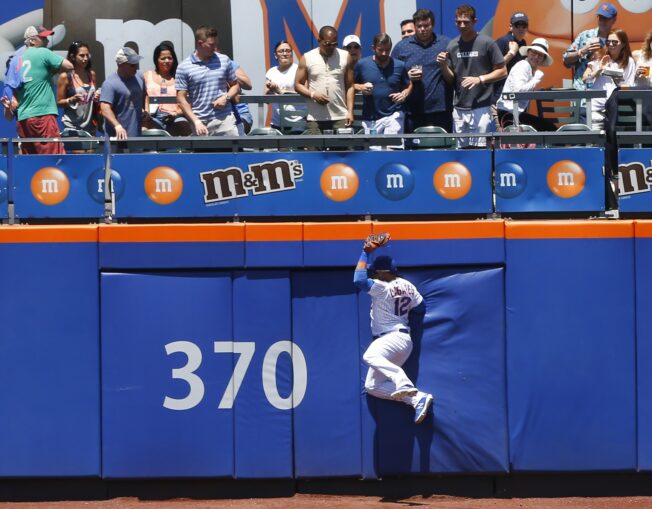
MMO: The Fielding Bible, Volume V, was released this March and includes important updates to DRS. Can you talk a bit about the changes?
Simon: To do that I want to start by explaining how DRS works at a higher level. First of all, it varies by position because for shortstops we’re tracking double play turnability; for first basemen and third basemen we’re tracking how they handle bunts; for catchers we’re tracking pitch framing and blocking and outfielders we’re tracking outfield arm. Those are all the additional components; the primary component is the idea of being able to turn a batted ball into an out.
For example, a ground ball hit down the line. In the past, we had our data points and we’d tell you, okay, this ball had a 10 percent out probability. If he makes the play, he’s doing something that 90 percent of players can’t do, so he gets a credit of essentially that 90 percent, .9 in terms of saving a play. Now if the ball was down the line, that’s a likely double.
When you turn that into what we call a run value, he’s getting that spike for making that play on a ball that’s more likely to be a double. That’s why a centerfielder who’s really good, like Byron Buxton or Kevin Kiermaier or Juan Lagares in his prime, is scoring very well in DRS because the balls they’re catching are potential doubles or triples and he’s taking those away.
When DRS was invented in the mid-2000s, shifts basically didn’t exist. We always treated everything as combining their positioning and their range, because we didn’t know where the fielder was standing. If the third baseman was right on the line and made the play, that to us was no different from if he had to kind of scoot over to make that play and make an off-balance throw. We included where he was positioned into the value that he was getting.
I think there were some in the statistical community where that wasn’t necessarily great by them. But thankfully with modern technological advances and such, with infielders, we now know starting positions much better than we did previously. We can now say that the ball down the third base line, if the third baseman is standing right there he’s not getting as big of a credit as if he had to hustle over to make the play. And that’s a truer representation of his skills rather than where the coaching staff put him on the field.
Now we track positioning and can tell you which teams are the best and worst at positioning, but now we can track that with performance. We can separate the two of them, and we can break performance up.
For Amed Rosario, there are a lot of components to his defensive runs saved being as poor as it. However, we can tell you that for an infielder we have range, throwing and air. Air comprises of popups and shallow flyballs into the outfield, which is usually a very small number for an infielder.
Rosario is at the bottom of the list in range because he’s not getting to balls that other shortstops are getting to. However, he’s among the top shortstops in terms of throwing. That’s judged by, okay, he got to the ball, but for the balls that he got to did he get the out?
He’s getting some unlikely outs because of his arm and he gets a value spike for that. Unfortunately for him, he rates statistically problematic in terms of range so that hurts him much more than his arm helps him. We can tell you what is better or worse than the other and I think that helps you understand what a player brings to the table.
Rosario went from -16 runs saved in 2018 in our system to -10 in 2019. So, the idea that to your eye he got better is definitely true, but he has a long way to go. And a lot of that was accumulated early in the ’19 season and he got better as the year went on, so I think you’d be optimistic for him.
MMO: Baseball Savant has released some defensive metrics over the years, and released Outs Above Average (OAA) for infielders earlier this year. How should fans look at OAA vs. DRS?
Simon: OAA is a different thing but similar. We would encourage people to look at everything because there isn’t a ton of defensive stats out there.
OAA is essentially only looking at the range component. They’re not considering the double plays or the throwing arm and things of that nature. And they’re doing it based on their inputs rather than ours, and if you do a little research you can read up on the inputs they use.
We work with Statcast, so our relationship with those people is good and positive. I think they’re meant to be used together.
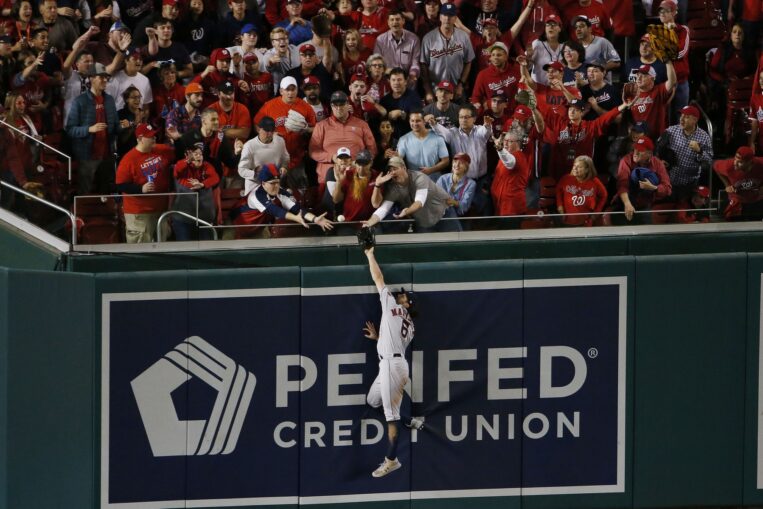
MMO: The Mets as a team recorded the 28th-worst DRS at -86 in 2019. They’ve been a poor defensive team for the last three seasons, and haven’t posted a positive team DRS since 2016. For you, what’s been the biggest issue(s) for the Mets defensively, and how could they start to turn it around and be a better defensive team?
Simon: I’ll start with the now. I think they’re a bit stuck. They’re not changing Alonso, they’re not changing Robinson Cano, they’re not changing Rosario unless they get Francisco Lindor or something. You’re going to play McNeil somewhere and he’s the best of the bunch [defensively].
Michael Conforto and Brandon Nimmo you kind of know what they are; they’re not hugely damaging guys on the defensive side but they’re not great either. The only thing they could seemingly do was bring in the late-game defensive with Jake Marisnick. He’s good and hopefully, for their sake, he’ll continue to be good.
I guess you would hope that players are still young. Rosario’s still young, Alonso knows now that he doesn’t have to be super eager on the ball hit between first and second. And he’s shown from Vegas to year one that he’s made a pretty good jump in terms of how he performed, so you would hope year one to year two that he improves even more. Cano is what he is. You know McNeil is decent wherever you stick him.
But why are they so poor over a three-year period? I think it’s player choices. They prioritized certain things and some didn’t work out. In the end, they have to deal with it the way that they are, as I said there really wasn’t much they could do about it.
I’ll give you the one thing you would hope they could do in theory that you’re probably thinking is the easiest is getting Noah Syndergaard to stop allowing so many stolen bases. (This interview was conducted prior to the news of Syndergaard needing Tommy John Surgery.) He’s hurting the cause significantly. If he could just halve those from last year, that would be a jump.
I also want to make this point, I call it the Eric Young Jr. effect. If you go from Lucas Duda in left field to Eric Young Jr. in left, it’s more aesthetically pleasing to the fans, but you’re going from someone who’s like -15 to someone who’s a zero or maybe even a positive overall. To go from bad to average is at least in my mind, maybe it doesn’t necessarily bear out this way in real life, but is almost the same to me as going from average to pretty good.
MMO: Mets pitchers recorded a +1 DRS in 2018 to a -18 DRS in 2019 (tied for the worst in the majors with the Baltimore Orioles). What was the reason for such a decline in those two seasons?
Simon: The -18 DRS is half the product of Syndergaard. Jacob deGrom is usually good and for whatever reason last year he didn’t register as such. I believe he did allow some more stolen bases than he typically does. Other than that, there’s a lot of minus ones and minus twos.
I think a full-season from Marcus Stroman and a deGrom bounce-back defensively would help. DeGrom has gone 0, 6, 0, -2, 4, -3; the negative 3 was attributable to entirely the stolen bases, 24, which was a career-high. If the steals drop, he’s back to himself.
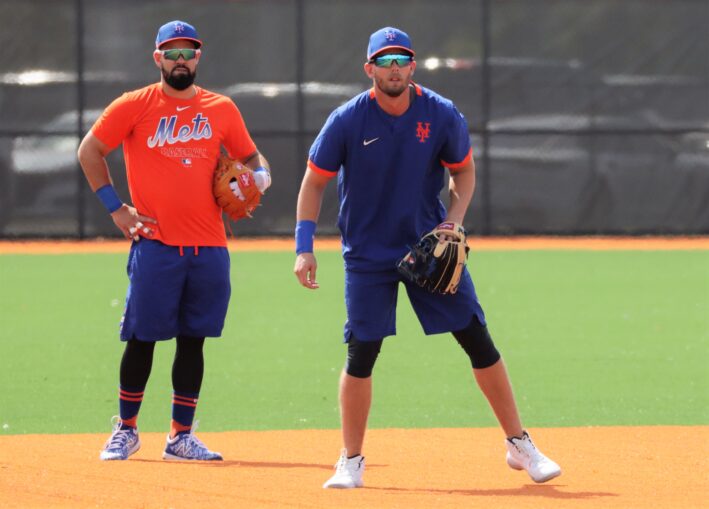
Photo by Ed Delany/MMO
MMO: Jeff McNeil led the Mets in DRS last season (among players who played at least 100 defensive innings) with +4 at third base. He also was at +1 in right field (300 innings). Does McNeil’s versatility factor at all into DRS?
Simon: I would describe him as a rarity. Each position is kind of its own, and we do have the overall leaderboard. The overall leaderboard is as you would think it is and it’s there for public consumption. But ideally, you’re comparing positions versus others at those positions when you’re making evaluations.
I would say you’d want to do an Excel-based or Baseball-Reference Play Index-based search for how many infielders are positive runs saved at multiple positions playing x number of innings, and I would think that McNeil would certainly be among them.
Cody Bellinger was a multi-positional champ last year, DJ LeMahieu was really good too. I think McNeil is right there with them.
MMO: Fans have heard about Pete Alonso’s shortcomings defensively as he ascended throughout the minors. He posted a -3 DRS in his rookie season in 2019, but, in the Mets chapter in The Fielding Bible, Volume V, you wrote that Alonso led all first basemen with 33 Good Fielding Plays. Can you expand on that?
Simon: He was subject to having to handle a lot of throws that were askew. The Good Fielding Plays is a component when you look at first basemen, so a lot of it is from that.
He made his share of really difficult defensive plays certainly, and I think that we were pretty impressed with that. I think that his ability to do that stretch, that split, ideally will be worth something in the future.
Keep in mind every team’s first baseman if he’s a regular, everyday guy like Freddie Freeman, Brandon Belt, etc. are pretty good at scooping throws so the value spike for that is not necessarily that great because everyone is really good and there’s not much of a difference between the best guy and the eighth or ninth-best guy.
MMO: Wilson Ramos certainly had his issues with pitch framing in 2019, particularly with pitches low in the zone. Ramos was dropping to one knee with no runners on base at the end of last season and carried that into Spring Training this year, hoping it would aid in his framing.
Considering Ramos is 32 and has had his share of knee injuries and surgeries in the past, should fans expect to see any progression from Ramos in 2020?
Simon: We have aging curves and that’s something that’s covered in the book. He’s got a few problems and one is the strike zone, he does not catch the low pitch well. Gary, Keith and Ron talked about that during the season and it’s been addressed in print and other places.
He does catch the high pitch well, which is nice, but unfortunately, there are not a lot of takes on the high pitches. He also doesn’t control the running game and stolen bases rack up against him.
I think going to one knee will be good when there’s nobody on base, but I think if there are runners on he might have a hard time making plays from one knee. Do I think he will improve? I think if you were going to put percentages on it, I think you’d put percentages on him not.
MMO: Does Sports Info Solutions also track the minor leagues?
Simon: We do, yes. We track the minor leagues comprehensively and we’re increasing in that. We now track Japan and Korea, too. Korea starts this year.
MMO: Thanks for your time today, Mark. Best of luck with the book!
Simon: My pleasure. Thank you.
Follow Mark Simon on Twitter, @MarkASimonSays
Follow Sports Info Solutions on Twitter, @SportsInfo_SIS
To purchase The Fielding Bible, Volume V, click here.


